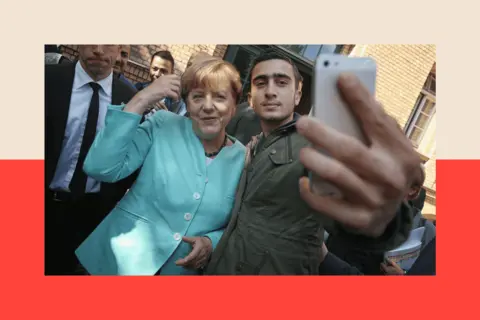From Welcoming Arms to Closed Borders: The Transformation of Europe's Migration Policy
 Image Credit: Sean Gallup/Getty Images
Image Credit: Sean Gallup/Getty ImagesIn 2015, Europe witnessed a wave of migration with over a million asylum seekers arriving, fleeing violence and persecution from countries such as Syria and Afghanistan. Welcome became the initial response, epitomized by Angela Merkel's Wir schaffen das (we can do it). However, this welcoming attitude rapidly transformed as political pressures and rising populism influenced migration policies across the continent.
Asylum seekers, previously met with hospitality, began facing stringent border controls, particularly in Hungary, where strict measures were implemented to deter entry. Hungary's Prime Minister Viktor Orban's policies reflect a growing trend of nationalism and anti-immigrant sentiment that has reshaped migration rhetoric in Europe.
The shift is starkly illustrated in personal testimonies from refugees. For many, the dream of safety transformed into a harsh reality where migration routes are fraught with dangers, from treacherous sea crossings to bureaucratic red tape that simplifies exclusion rather than inclusion.
Human rights abuses have escalated in the wake of increasing border security. With more than 32,000 people reportedly perishing in attempts to reach Europe over the last decade, many find themselves trapped in a heartbreaking limbo, navigating a legal landscape stacked against their aspirations for a better life.
The article examines how even nations once seen as sanctuaries for refugees, such as Sweden, have succumbed to rising fears about crime linked to migration, shifting public sentiment towards a more hostile stance. Family reunification processes have become more stringent, stoking fears and frustrations among communities already facing the challenges of integration.
Going back to the graves marked 'Unknown' on Lesbos, we are reminded of the tragic human cost of Europe’s changing migration policies—a potent symbol of those who embark on perilous journeys in search of safety and solace.

















